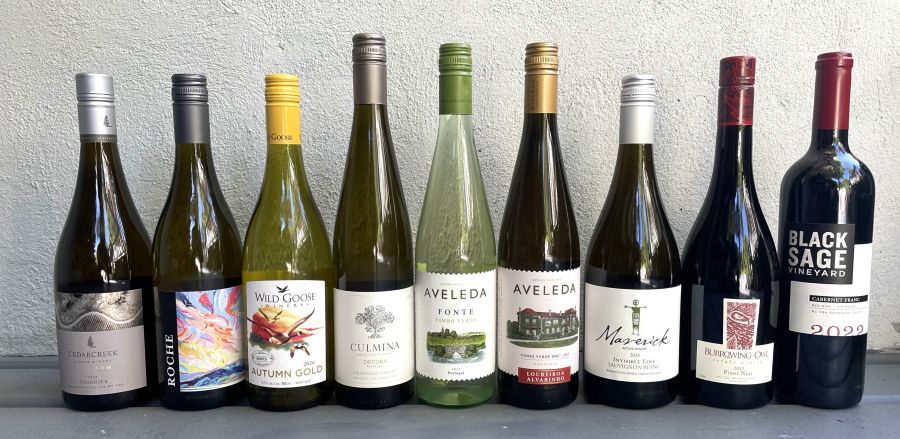Search VernonNow
Well, well, well.
Isn't this just the most blatant excuse to drink wine you've ever heard.
Sunday, May 25 is National Wine Day.
No one is even sure how, when, why or where National Wine Day started.
The best it can be tracked down is that it started to pop up on social media in the US around 2009 with #NationalWineDay.
It gained traction -- after all, who doesn't like to drink wine?
And now National Wine Day is listed on every wine calendar out there along with bona fide celebrations like World Chardonnay Day (just past on May 21), International Rose Day (June 13), International Pinot Noir Day (Aug. 18) and International Box Wine Day (Sept. 9).

As you can see, every varietal and type of wine tends to have its own day.
That's because wineries and wine sellers want you to buy wine and having a so-called 'special day' is justification enough to purchase that particular bottle.
Therefore, National Wine Day is as good a reason as any to sip and savour.
And, with National Wine Day being so vague, you aren't bound to any particular wine, varietal, style or country of origin.
So, make it red, white, rose, sparkling, fortified or mulled.
Put your wine in a sangria, spritzer or cocktail or even have some distilled wine (brandy).
Here are nine bottles for National Wine Day inspiration:
- CedarCreek 2023 Viognier ($42) from Kelowna
Aromatic with a creamy orange and apricot profile.
- Roche 2024 Artist Series Pinot Blanc ($27)
Made by the Naramata Bench winery with grapes from Dundee Hills, Oregon.
- Wild Goose 2024 Autumn Gold ($20)
A fresh and light, off-dry offering from the Okanagan Falls winery, a blend of Riesling, Gewurztraminer and Pinot Blanc grapes from Washington state and Oregon.
- Culmina Decora Riesling 2022 ($23) from Oliver
Dry and luscious with a nectarine-tangerine-mineral profile.
- Aveleda Fonte Vinho Verde 2023 ($14) from Portugal
Vinho Verde may translate to 'green wine' but the wine is not green, it's the lush landscape the grapes are grown in that's vibrant green.
Vinho Verde is one of Portugal's 14 wine regions where white, red and rose wines are made of various indigenous grapes you've probably never heard of.
For instance, the Aveleda Fonte is a blend of Loureiro, Trajadura, Arinto and Fernao Pires.
It's light and slightly fizzy with a green apple-lemon-and-mineral profile.
- Aveleda Vinho Verde 2023 Loureiro and Alvarinho ($17) from Portugal
More tropical notes in this one.
You may recognize the Alvarinho in this blend as what the Spanish call Albarino.
By the way, Aveleda touts itself as one of only three wineries in Portugal to earn B Corp Certification, the globally recognized standard for the highest levels of social and environmental performance.
So, these wines just don't taste good, they're sustainably grown, made and bottled.
- Maverick 2024 Invisible Line Sauvignon Blanc ($26)
So named for the 'invisible line' of a border that separates this winery in Oliver, BC from Washington state, which is where the grapes came from to make this Sauv Blanc.
It's bright and juicy with some heady notes of pineapple, New Zealand kiwi fruit and lime.
- Burrowing Owl 2023 Pinot Noir ($45) from Oliver
Classic high-end Pinot with aromas and flavours of raspberry, cherry, spice and earth.
- Black Sage 2022 Cabernet Franc ($33) from Oliver
Uncork this big cherry-vanilla-spice bomb when you light the barbecue to grill steaks.
Where's Moldova?
I had to look up where Moldova is.
It sounded vaguely familiar -- one of those former USSR countries on the fringe of Europe or the fictional land of a Disney princess.
Anyway, on a map, I figured out Moldova is landlocked, sandwiched between Ukraine and Romania just northwest of the Black Sea.
I was doing this Googling because I've been invited to the 46th World Congress of Vine and Wine being held in Moldova's capital of Chisinau, June 16 to 20.
Alas, I can't go -- it's too far away, too expensive to get there and it neighbours war-torn Ukraine.
But, it was fun to be asked.
My Googling also revealed that Moldova has a well-established wine industry with 266,000 acres in commercial vineyards and 101,000 in personal and local vineyards for homemade winemaking.
To put that in perspective, the Okanagan's commercial vineyards cover 11,000 acres.
Moldova grows native grapes you've never heard of like the Feteasca Alba white and Feteasca Neagra red, but also produces popular varietals such as Chardonnay, Pinot Gris, Cabernet Sauvignon and Merlot.
Steve MacNaull is a NowMedia Group reporter, Okanagan wine lover and Canadian Wine Scholar. Reach him at [email protected]. His wine column appears every Friday afternoon in this space.